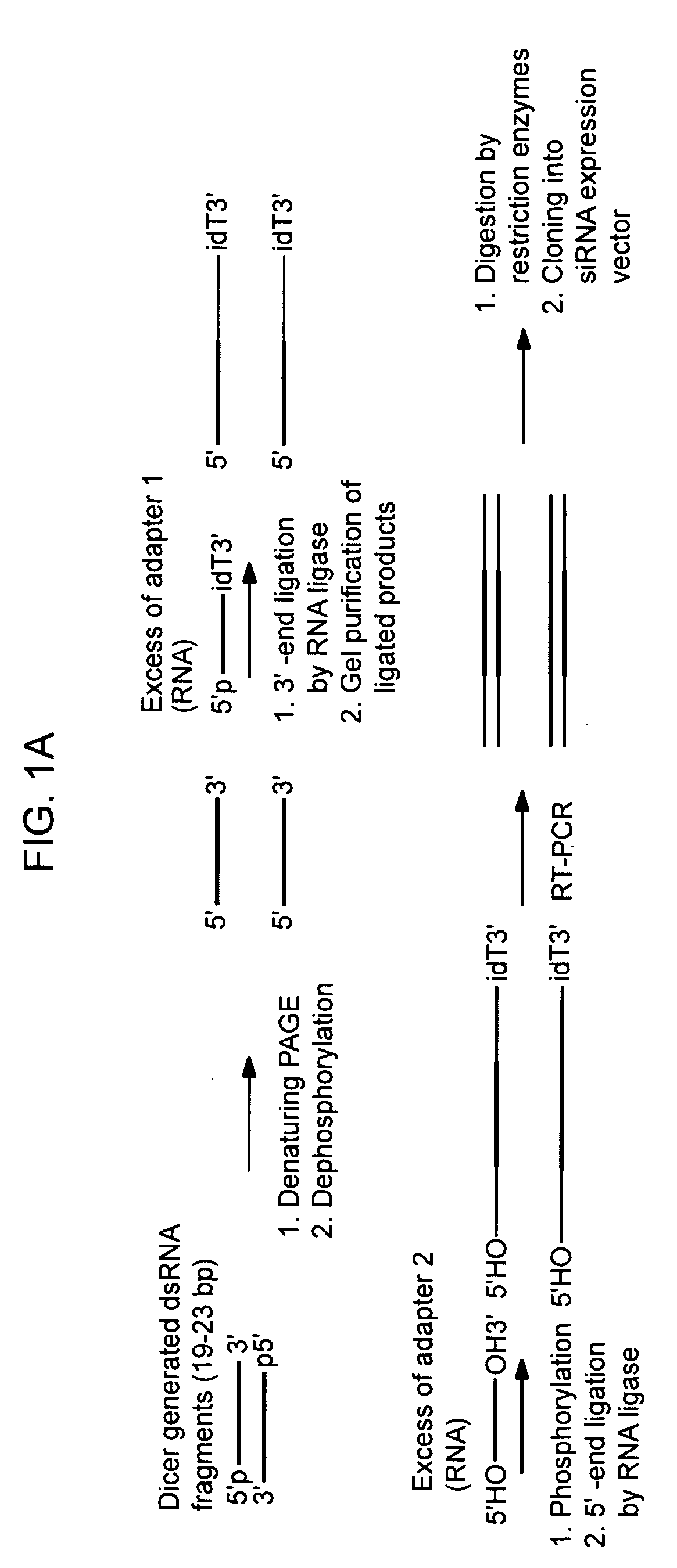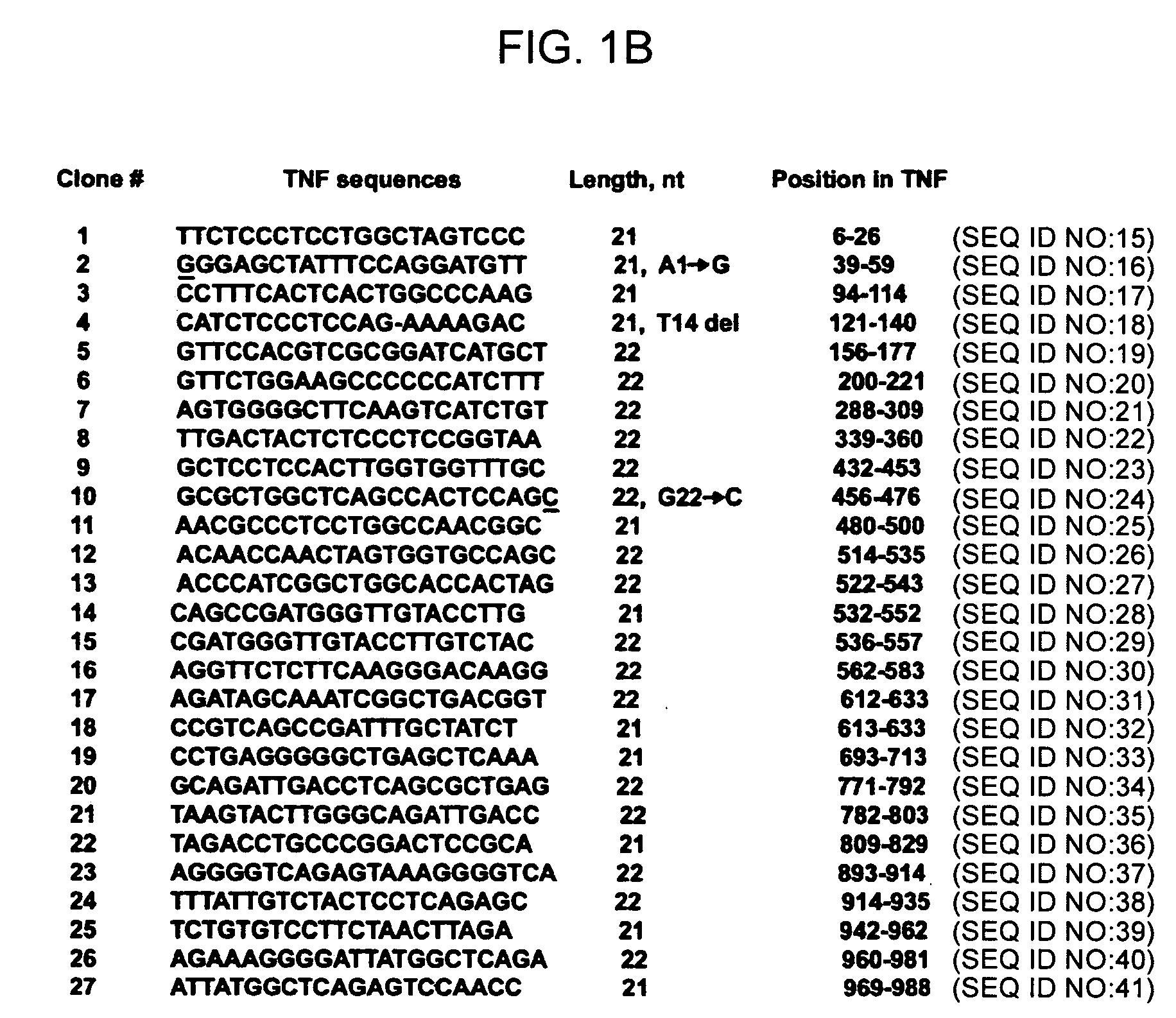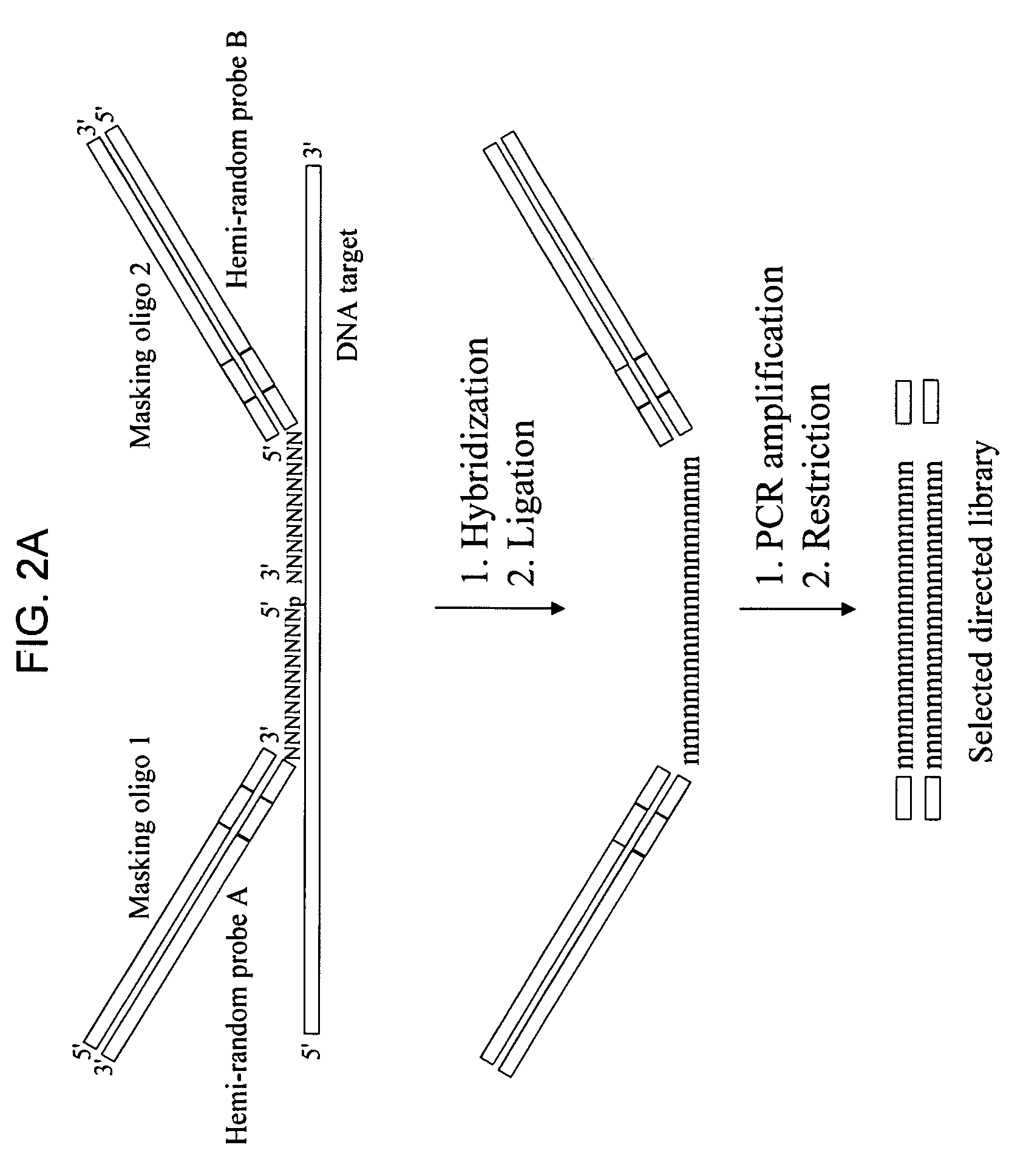Methods of preparation of gene-specific oligonucleotide libraries and uses thereof
a technology of oligonucleotide libraries and gene-specific oligonucleotide, which is applied in the field of gene-specific oligonucleotide libraries, can solve the problems of inability to reliably select the optimal sequence of nucleic acid hybridization probes and target site accessibility based on sequence data analysis or experimentally determined in vitro target accessibility, and the situation is even more complicated
- Summary
- Abstract
- Description
- Claims
- Application Information
AI Technical Summary
Benefits of technology
Problems solved by technology
Method used
Image
Examples
example 1
Production of a Directed Sequence Library for a TNF (Tumor Necrosis Factor-α) Target by the Dicer-Based Method
[0084] Transcription of the target. Sense and antisense strands of the RNA target were transcribed from a PCR-amplified DNA template either in one-tube reaction using opposing T7 promoters or separate-tube reactions, one using SP6, another T7 promoter (with Ambion's MEGAshortscript or MEGAscript kits).
[0085] Annealing and Dicer digest. RNA strands were annealed to form perfect duplex and digested by recombinant Dicer enzyme:
[0086] Dicer 6 μl (0.5 U / μl, Stratagene #240100-51)
[0087] 5× buffer 6 μl
[0088] dsRNA+water 18 μl (˜3 μg)
[0089] Resulting 20-22 bp siRNAs were purified and strands-separated by 15% PAG-7M urea, eluted by crash / soak method and ethanol precipitated, then dissolved in 5 mM Tris-HCl pH 7.5.
[0090] The directed libraries produced by this method contain both sense and antisense gene-specific sequences. If it is desirable to obtain sequences that only corre...
example 2
Production of a Directed Sequence Library for a TNF Target by the Ligation-Based Method (Alternative #1)
DNA Target
[0142] The DNA target was a single-stranded murine TNFα cDNA. The target was prepared by amplification from a pGEM-4 / TNF plasmid which included sequences for the murine TNFα gene with the full-length 5′-UTR and part of the 3′-UTR, totaling 1 kb. Amplification was by asymmetric PCR, using only a single primer, allowing production of single-stranded DNA. The single-stranded DNA was purified away from primers using a GeneClean III kit, ethanol precipitated, and used in experiments as a target for preparation of a directed library.
Hemi-Random Probes, Masking Oligonucleotides, and PCR Primers
[0143] Hemi-random probes, masking oligonucleotides, and PCR primers were synthesized by IDT (Integrated DNA Technologies, Coralville, Iowa).
[0144] Hemi-random probes contained 10-mer random regions and 26-mer defined sequences that contained a primer binding site and a restriction...
example 3
Production of a Directed Sequence Library for a DsRed Target by the DNase-Based Method (Alternative #2)
[0160] Preparation of gene-specific libraries by DNase I fragmentation of a dsDNA target (FIG. 3A)
[0161] PCR-amplified cDNA encoding DsRed was subjected to partial digestion with DNase I in a buffer containing 1 mM MnCl2, 50 mM Tris-HCl (pH 7.5), 0.5 μg / μl BSA, and 0.1-0.3 U / μg DNase I (Ambion) at 20° C. for 1-10 min to generate small, blunt-ended DNA fragments (FIG. 2A). Under these conditions DNase I displays little sequence specificity, cleaving all regions of the DNA (except the terminal nucleotides) at an equal rate (Anderson 1981). Since DNase I generates fragments with a wide size distribution, reaction time and temperature were varied to determine optimal conditions to maximize the proportion of DNA in the desired size range (Anderson 1981; Matveeva et al., 1997). Aliquots were collected at various time points and quenched with an equal volume of loading buffer (95% forma...
PUM
| Property | Measurement | Unit |
|---|---|---|
| Length | aaaaa | aaaaa |
Abstract
Description
Claims
Application Information
 Login to View More
Login to View More - R&D
- Intellectual Property
- Life Sciences
- Materials
- Tech Scout
- Unparalleled Data Quality
- Higher Quality Content
- 60% Fewer Hallucinations
Browse by: Latest US Patents, China's latest patents, Technical Efficacy Thesaurus, Application Domain, Technology Topic, Popular Technical Reports.
© 2025 PatSnap. All rights reserved.Legal|Privacy policy|Modern Slavery Act Transparency Statement|Sitemap|About US| Contact US: help@patsnap.com



